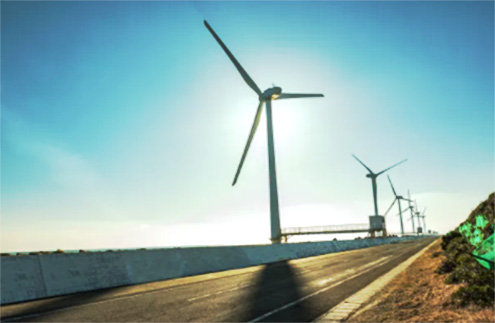Most wind turbines use mechanical anemometers and wind vanes to measure wind conditions and transmit data such as wind speed and direction to a wind turbine controller. However, there are many inherent defects in the monitoring and control system configured by the original equipment manufacturer that can result in higher maintenance costs and lower power performance for wind turbines.
The problem is moving parts used by the sensor. Anemometers use "wind cups" to measure wind speed, and vanes use fins to measure changes in vector or wind direction. During the field inspection of the wind field, it was found that most of the faults that caused many sensor problems were related to bearing problems. Bearing problems can lead to reduced accuracy and reduced service life of the meter. Increasing the rolling resistance of bearing will also affect the accuracy of wind measurement. Because this data is used to optimize the performance of wind turbines, it can also affect the efficiency of wind turbines. Coupled with cold winter weather, icing on the sensor’s exposed mechanical components can also increase maintenance.
In icy weather, some wind turbines can be badly affected. Slight humidity, combined with sub-zero temperatures, can freeze the anemometer and vane, causing wind turbines to shut down. In order to cope with this kind of weather, some wind turbines are equipped with heated sensors, which are better tolerant to cold weather in winter. However, due to the higher temperature of sensor bearings, the average time between failures of system bearings is much smaller.
Due to wind data is essential for documenting eddies and protecting wind turbines, wind turbines need accurate wind operating information in order to operate safely. 300W wind turbine with low starting wind speed and low running vibration. When the anemometer speed does not change rapidly, such as when the bearing belt is faulty, the eddy current cannot be accurately measured. The turbine control system adjusts the blade spacing and rotor speed separately according to the degree of turbulence in order to protect the blades and drive mechanism from fatigue damage caused by improper use of rotating blades.
The exact direction of the wind is equally important. Once the turbine deviates by more than +/-10 degrees, the power output drops dramatically. Power output can be 20 percent lower than an adjacent wind turbine with a working vane. This has been observed in practice, probably because of a local failure of the vane when the turbine is running. This case proves that ultrasonic meters are more suitable for measurement applications because they can provide a more accurate and reliable indication of wind state.
Mechanical wind measuring devices, replaced by ultrasonic sensors, use programmable logic controllers (PLCS) to convert the signals measured by the sensors for better control of wind turbines. The signal from the ultrasonic sensor needs to be converted into a signal that the turbine controller can use. The signal from the ultrasonic sensor needs to be converted into a signal that the turbine controller can use. There is no ultrasonic sensor that provides a variety of forms of information that can be used directly by all types of turbine controllers.
The PLC can act as an emulator for the turbine. That is, according to the turbine type, special ladder diagram logic is written to simulate the digital logic sensor signals required by each turbine controller.
Although the system is still being optimized, initial results include improved meteorological accuracy, reduced operational downtime, reduced turbine-drive fatigue loads, and improved turbine efficiency.
